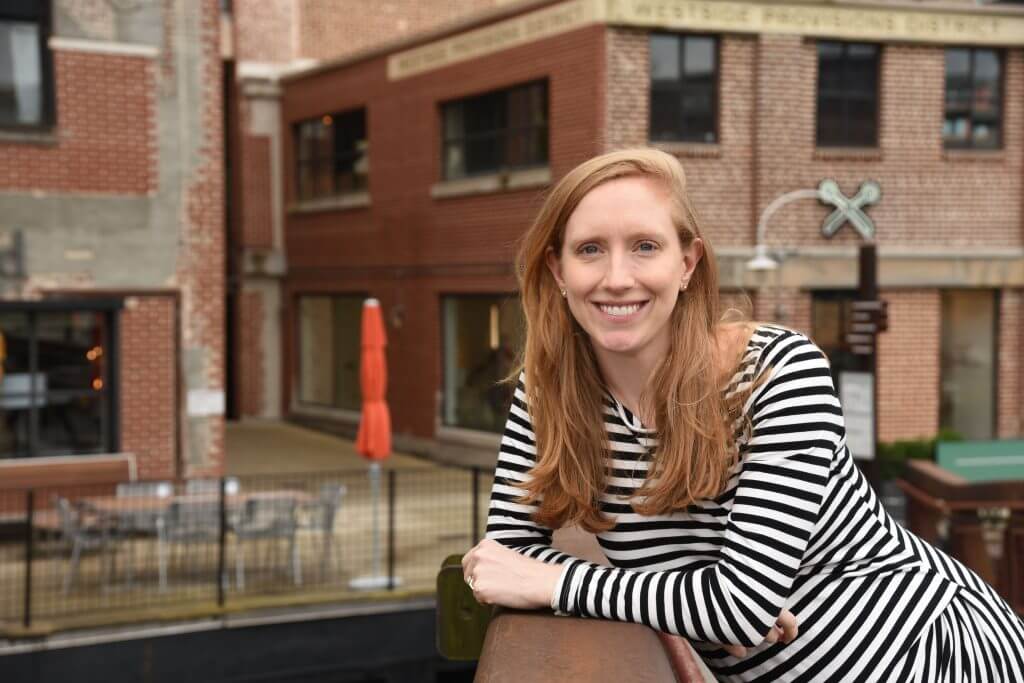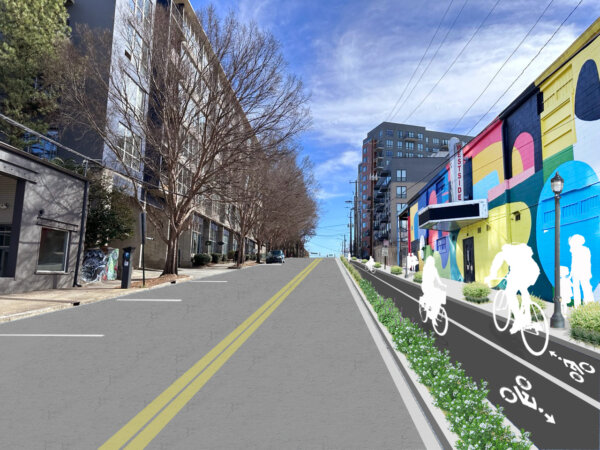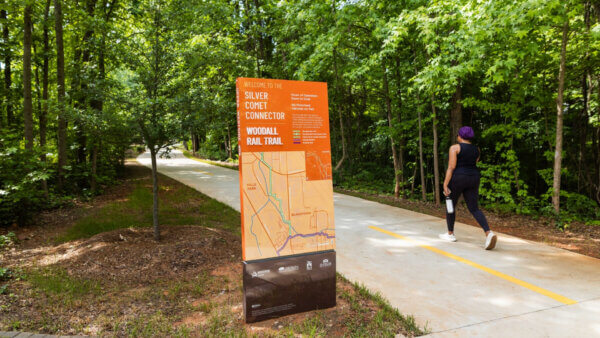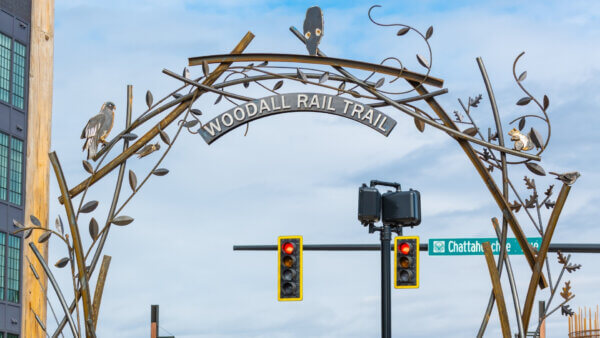If you have access to the Atlanta Business Chronicle, you can read the full article here.
By Fran M. Putney – Contributing Writer
Mar 8, 2019, 5:30am EST
The success of Community Improvement Districts (CIDs) in Georgia has recently led more districts to initiate these public-private partnerships, which enable businesses to expedite infrastructure and other improvements to their areas.
Some of the newest of the state’s CIDs include West End, Upper Westside, Assembly and Highway 278. At least three others are being planned, according to Nicole M. Hall, managing principal of Nickel Works Consulting, including districts in Henry and Forsyth counties.
One of the biggest challenges in bringing a CID to fruition is obtaining the consent of the required number of commercial property owners who voluntarily agree to pay an additional tax for this purpose. Larry Callahan, CEO at Pattillo Industrial Real Estate, is a board member of the Chamblee-Doraville CID, now in its final stages of formation. The ask gets easier as more get on board, he said, adding, “It’s a matter of trust and education.”
The collective power of a CID is helpful for both new developments and existing businesses, said Callahan. “If you’re a small owner of the property, it’s hard to have a voice that gets heard,” he said. “When you form a CID representing all the owners, that is a voice that is heard.” Like many districts, business leaders in Atlanta’s West End had long discussed the idea before a CID was established in 2017, according to Hall, who also serves as West End CID administrator. While the community was engaged and supportive, it initially lacked funding, she said. But Hall was able to secure the resources of Atlanta University Center Consortium, which consists of Spelman College, Clark Atlanta University, Morehouse School of Medicine and Morehouse College. Though educational institutions are tax-exempt, Hall explained, she was able to get the organization on board because these universities own taxable land parcels.
West End’s work has focused on public safety, beautification and pedestrian-friendly projects, including the installation of crime-deterring security cameras and a partnership with the city of Atlanta and Georgia Department of Transportation (GDOT) to beautify the I-20 interchange at Lee and Lowry Streets, considered the gateway to the West End. In September, the CID kicked off an economic development project to help merchants on Ralph David Abernathy Boulevard redesign their storefronts. Longer-term projects include development around the West End MARTA station to create an enhanced live-work-play environment, according to Hall.
After a year of discussion, business leaders established a CID in the growing and increasingly popular Upper Westside area in 2016. Elizabeth Hollister, now it’s executive director, helped organize the effort based on a feasibility study she oversaw for her master’s thesis project at Georgia Tech.
With traffic congestion one of the area’s biggest problems and a focus on multi-modal transportation, the district’s greatest success thus far is $12million in funding for the Howell Mill Road Complete Street Project, said Hollister. The project will synchronize traffic signals and add bike lanes and other features to make the thoroughfare safer and more inviting to pedestrians and bicyclists, she added.
Another early achievement of the Upper Westside CID has been its work with the Department of Watershed Management to clear 4.5 acres of green space near the Hemphill Reservoir for public use. Benches and bike racks will be added thanks to a partnership with city NPUs, Hollister said.
The CID and its work are growing, with the district’s expansion approved by Atlanta City Council last summer. A program director of planning and capital projects was just hired to work on a master plan, what Hollister said is this year’s biggest initiative.
Another recently formed CID is the first CID to issue bonds to finance public infrastructure – including water and sewer systems, roads and sidewalks, high-speed gigabit fiber optic cable, and even a park. When the General Motors Assembly plant in Doraville closed its doors in 2008, the city and DeKalb County lost 4,000 jobs. Now, the 165-acre property, which the Assembly CID oversees, is being redeveloped for mixed use.
“The charge from the beginning was to not just bring a real estate project [to the area], but bring back those jobs,” said Eric Pinckney, Assembly CID board chair, who is also Integral’s project executive for the development.
At least 1,500 jobs will be in place by the end of March, according to Pinckney, thanks to the development’s first property owners: Asbury Automotive; Third Reel Studios and Serta Simmons Bedding. Assembly will ultimately include residential and retail components, and, with its close proximity to the Doraville MARTA station and another rail, a variety of transit-oriented projects, said Pinckney.
East of Atlanta, the Highway 278 CID encompasses a three-mile stretch of SR12/US 278 from I-20 Exit 90 through historic downtown Covington, Ga. The area is home to the thriving film industry and Emory University at Oxford is nearby. However, it also is known for some of the most dangerous intersections in Newton County, said Kathy Morgan, Highway 278 CID administrative coordinator.
With community input, a CID master plan was created to transform the accident-prone, five-lane highway into an attractive four-lane avenue, she added. Additionally, revitalization of four “villages” in the district will establish a sense of destination, and a multi-modal trail is being designed to connect to existing and proposed trail systems. Long-term, the community hopes that a commuter train will use one of the CSX lines that go through Covington, Morgan said.
At a glance: Stats on some of the new CIDs in metro Atlanta
Upper Westside
- Upper Westside CID board members: 10
- Number of commercial property owners: 200 + (Note: the CID does not keep count of commercial businesses)
- Amount generated in self-tax this year: Approximately $800,000
West End
- West End CID board members: 9
- Amount of commercial business: 67 commercial property owners; 107 parcels of land
- Amount generated through self-tax in 2017-2018 (last year available): $120,000
Highway 278
- Highway 278 CID board members: 7
- Amount of commercial business: 90 commercial property owners; 129land parcels
- Amount generated in self-tax in last year: $155,000
Assembly CID
- Assembly CID board members: 7
- Amount of commercial business: 4 land-owners
- Amount generated for public infrastructure projects: $53 million worth
of bonds (Note: the Assembly CID also receives revenue from self-taxation but it was not available at press time.)







